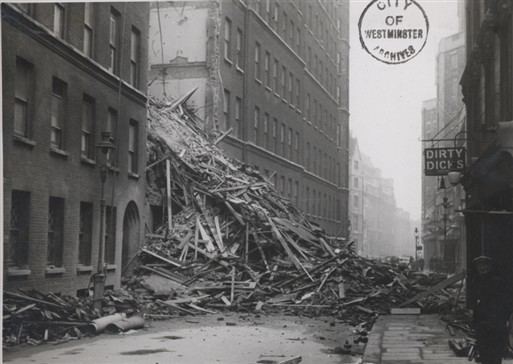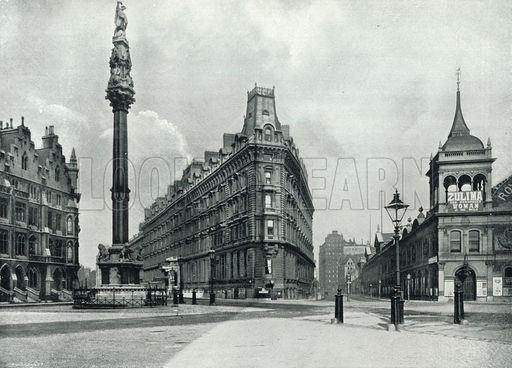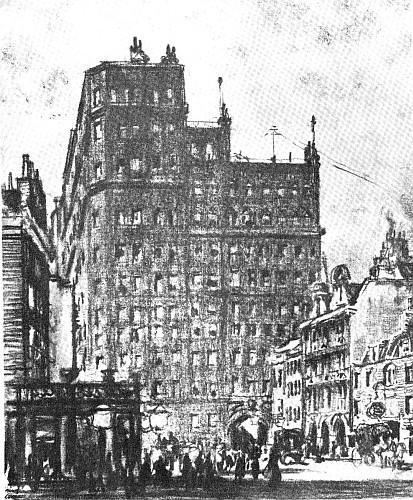 | ||
Similar 102 Petty France, 55 Broadway, St James's Park tube station, St James's Park, Palace of Westminster | ||
Queen Anne's Mansions was a block of flats in Petty France, Westminster, London at grid reference TQ296795. In 1873, Henry Alers Hankey acquired a site between St. James's Park and St. James Park Station. Acting as his own architect, and employing his own labour, he proceeded to erect the first stage of the block. At twelve stories, later increased to fourteen, it was the loftiest residential building in Britain.
Contents

The Court Circular for January, 1897 describes them as "a stupendous pile which, for solidity, comfort and general convenience, sets all rivals at defiance, although twenty years have elapsed and imitations have been legion"

History

Hankey further extended the flats in 1874 and 1877 to the south and west. There were objections to the height of the flats, not least from Queen Victoria who could no longer view the Houses of Parliament from Buckingham Palace. But because existing legislation did not explicitly prohibit building over 100 ft the authorities could not stop Hankey. However, the London Building Act passed in 1894, and its 80-ft height limit, was a direct result of "Hankey's Mansions".

It may have been legal complications that led him, for the remainder of the work, to employ an architect, E. R. Robson. Robson continued the mansions around the central courtyard, leaving only Queen Anne's Lodge as the sole survivor of the residential properties that had formerly stood on the site. Just before the turn of the century, however, Hankey ran into financial difficulties and the property passed into the hands of the Official Receiver. Under new management, the west block became a hotel and the remainder was let as flats and service suites.
During the Second World War, the entire building was requisitioned as Government offices, and it was decided to construct a shelter. A long room in the west block, originally a theatre, had supporting piers built up from the foundation, and a stout reinforced concrete slab was laid to give head cover. This was a wise decision as two direct bomb-hits caused debris to overload the upper floors, causing a vertical gash through the entire building.
Queen Anne's Mansions was home to the Medical Department of the Royal Navy (Admiralty) during WW2.
In 1947, the Ministry of Works retained the building on a 21-year lease.
In 1973, Queen Anne's Mansions were demolished and later replaced by 50 Queen Anne's Gate.
Facilities
A typical unit of accommodation was a living room, about 23 ft by 14 ft, a bedroom and a bathroom. In the corner blocks were some more commodious suites. Notwithstanding the prejudice against the building, no difficulty was found in letting the flats at high rents to tenants of the 'highest respectability'. A floor containing six rooms, without any grounds, commanded £300 per annum, and two rooms £60 per annum. The principal novelty of the building was the installation of hydraulic passenger lifts, at that time without precedent in domestic buildings in London. Fire control was also provided for by 98 hydrants, supplied from tanks storing 70,000 gallons on the roofs.
